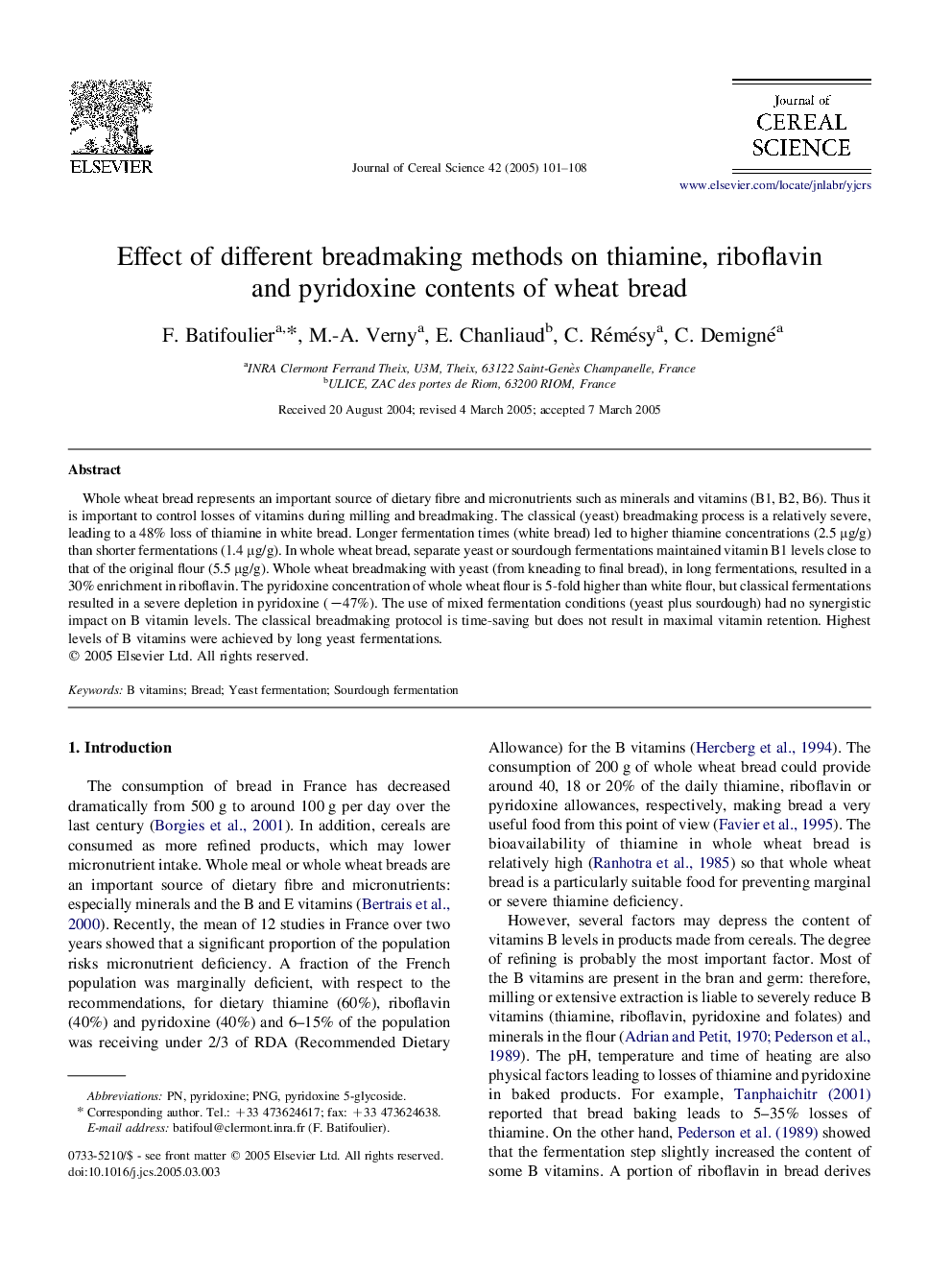| Article ID | Journal | Published Year | Pages | File Type |
|---|---|---|---|---|
| 9474491 | Journal of Cereal Science | 2005 | 8 Pages |
Abstract
Whole wheat bread represents an important source of dietary fibre and micronutrients such as minerals and vitamins (B1, B2, B6). Thus it is important to control losses of vitamins during milling and breadmaking. The classical (yeast) breadmaking process is a relatively severe, leading to a 48% loss of thiamine in white bread. Longer fermentation times (white bread) led to higher thiamine concentrations (2.5 μg/g) than shorter fermentations (1.4 μg/g). In whole wheat bread, separate yeast or sourdough fermentations maintained vitamin B1 levels close to that of the original flour (5.5 μg/g). Whole wheat breadmaking with yeast (from kneading to final bread), in long fermentations, resulted in a 30% enrichment in riboflavin. The pyridoxine concentration of whole wheat flour is 5-fold higher than white flour, but classical fermentations resulted in a severe depletion in pyridoxine (â47%). The use of mixed fermentation conditions (yeast plus sourdough) had no synergistic impact on B vitamin levels. The classical breadmaking protocol is time-saving but does not result in maximal vitamin retention. Highest levels of B vitamins were achieved by long yeast fermentations.
Related Topics
Life Sciences
Agricultural and Biological Sciences
Agronomy and Crop Science
Authors
F. Batifoulier, M.-A. Verny, E. Chanliaud, C. Rémésy, C. Demigné,
